A must-have for your home or vehicle
AcuClot is an advanced hemostatic sponge, designed to stop Surgical/ Superficial bleeding.
Based on ActClot Technology (Activated Clotting Mechanism), the composition and structure accelerates blood coagulation cascade, resulting in faster bleeding control.
Key features of AcuClot
Charge-based platelet aggregation, enhances blood coagulation (Ref. MOA).
Due to its cationic nature, the sponge is bioadhesive and creates a mechanical seal at the wound and accelerates the natural process of blood clotting.
Microporous honeycomb structure supports in higher (up to 40 times of sponge weight) and rapid blood absorption.
Sponge is based on Biopolymer*, hence completely biodegradable.
*Biopolymer made up of Chitosan and Alginate.

QUICK
Faster Time to Hemostasis

EFFECTIVE
Robust Clot Formation

EASY
Every Seconds Counts
Mechanism of Action
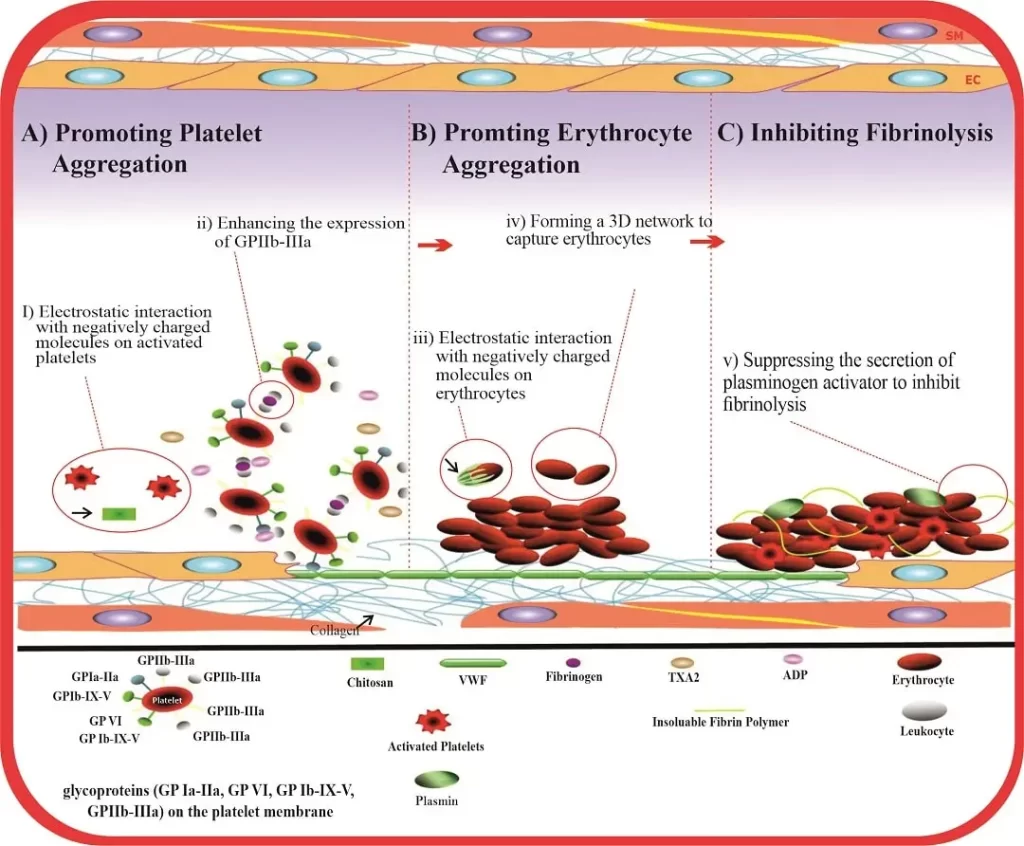
ActClot Technology: AcuClot plays a Haemostatic role by causing Platelet Aggregation and Inhibiting Fibrinolysis
Ref – Bano, Ijaz; Arshad, Muhammad; Yasin, Tariq; Ghauri, Muhammad Afzal; Younus, Muhammad (2017). Chitosan: A potential biopolymer for wound management. International Journal of Biological Macromolecules, 102, 380–383.
Use Cases
Post Catheterization
Catheter Sites, Dialysis Sites and Any Punctures.
Variants: ACT0303 , ACT5555
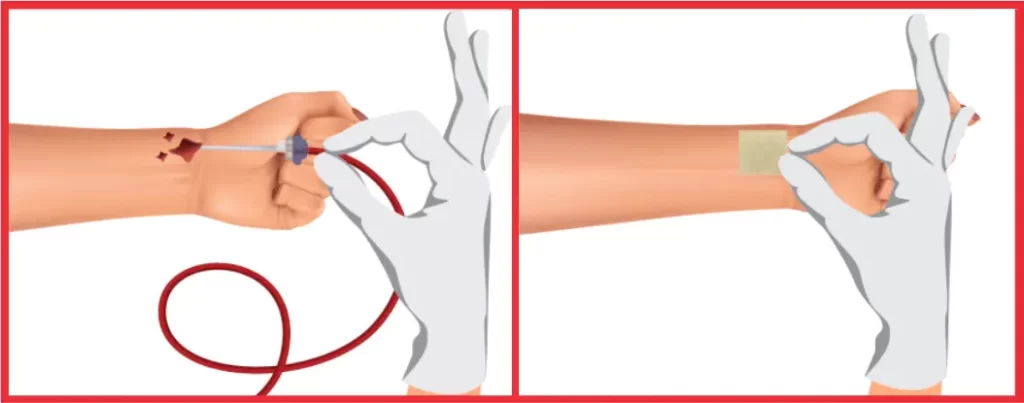
Post Operative
Surgical Incisions, Resections and Arterial Bleeds.
Variants: ACT5555 , ACT0808
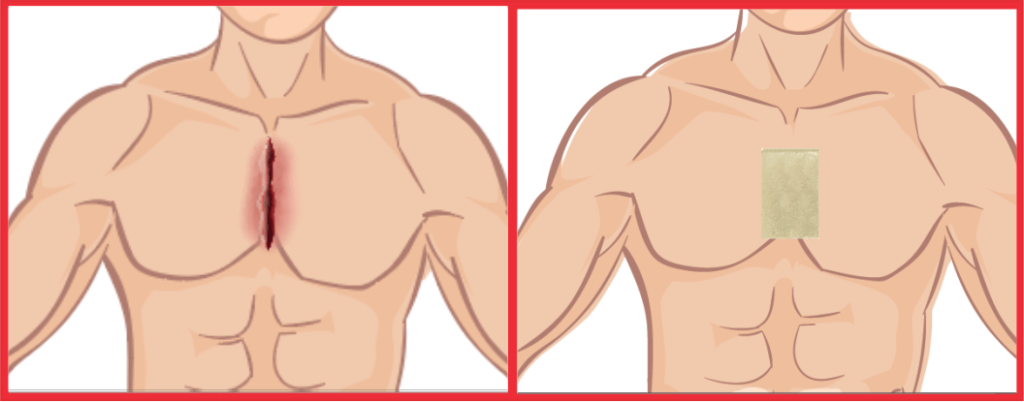
Dental Procedures
Oral Surgeries, Extraction Sockets and Multiple Tooth Extractions
Variants: ACT0101
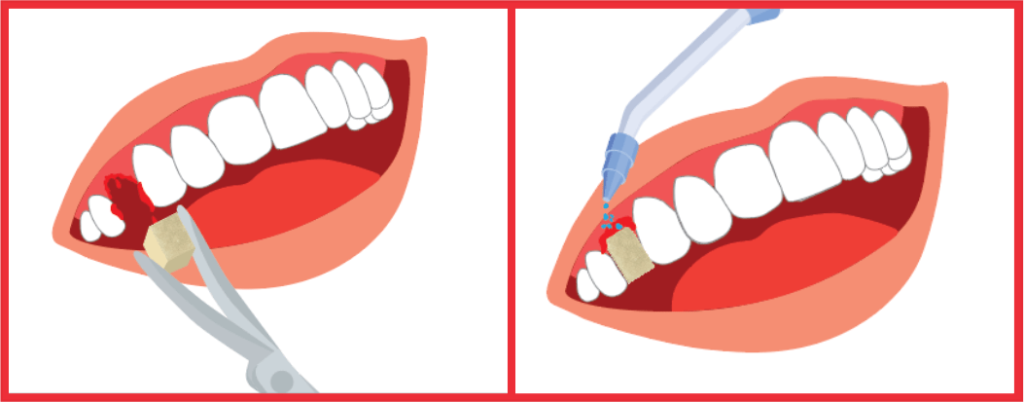
Trauma Injuries
Lacerations and Abrasions.
Variants: ACT1010

How to use?
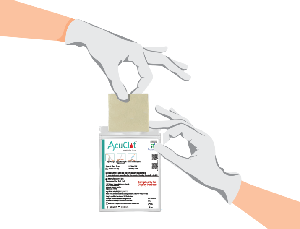
1. Open the pack and take
out AcuClot.
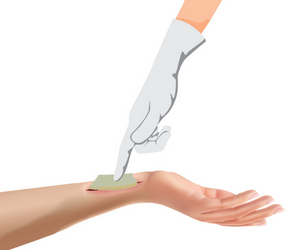
2. Apply AcuClot to the bleeding site so that it completely covers it. Apply consistent pressure until AcuClot adheres to it.
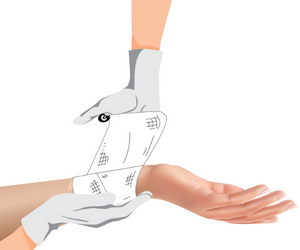
3. If necessary, use a secondary dressing to keep AcuClot in place.

4. Removal: Irrigate AcuClot thoroughly with water or saline & gently pull it away.
Characterization Tests
AcuClot Chitosan Haesmostatic Sponge
1. Microscopic Evaluation (SEM Analysis):
- Scanning Electron Microscopy image showing highly porous matrix with a typical honeycomb microstructure (100-300 µm).
- Uniform porosity allows it to rapidly absorb and block plasma during haemostasis.
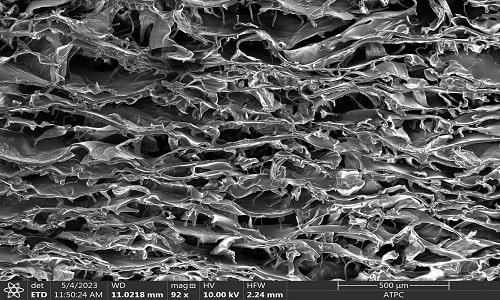

2. Bioadhesiveness:
• AcuClot’s cationic nature enables it to adhere strongly to the surface.
• Strong bioadhesive forces create a mechanical seal, accelerating the natural mechanism of blood clotting.
3. Absorbency:
- AcuClot’s ability to absorb liquid is up to 40 times its weight and its ability to absorb blood is about 15-20 times its weight
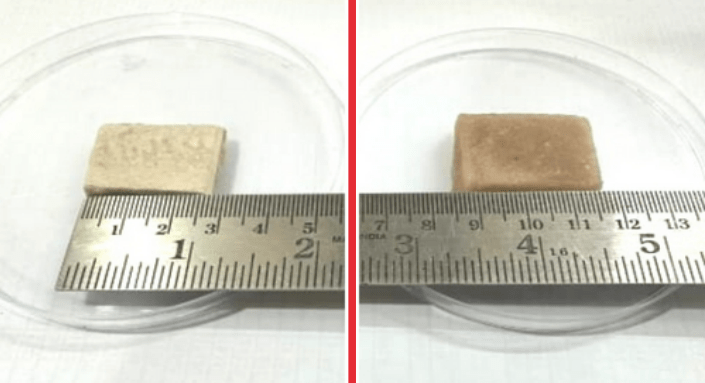
In-Vitro Analysis
AcuClot Vs Cotton Gauze
1. Whole Blood Clotting Time Study:
AcuClot quickly forms the blood clot and remains adhered to the test tube, unlike cotton gauze.
The formation of a blood clot is confirmed by inverting the tubes.
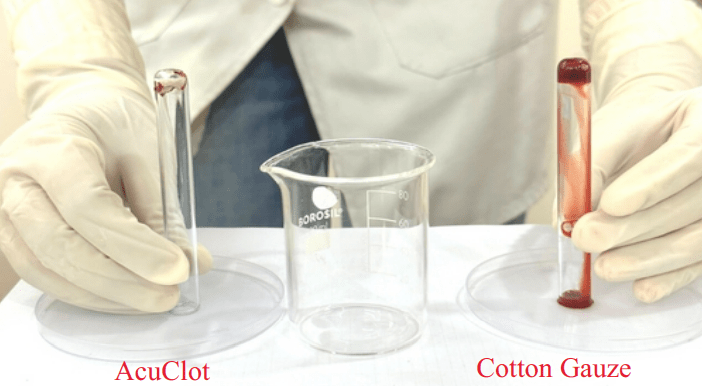

2. Haemolysis:
• Blood cells that have not clotted are haemolyzed in water, giving them a characteristic red colour.
• AcuClot does not show haemolysis as it forms a very strong clot showing it’s strength.
